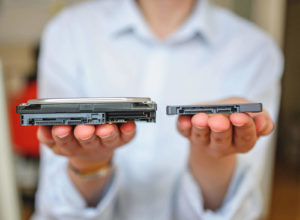
Solid State Disks (SSDs): Definition and Use Cases
If there’s one technology that has taken the storage world by storm over recent years, it’s flash drives. Solid State Disks (or SSDs) have transformed the storage landscape, offering much higher I/O density (IOPS per TB of storage) than can be achieved with traditional hard drives. HDDs are obviously mechanical media, based on spinning platters, accessed by multiple read/write heads. The physical geometry of these devices means that they are more attuned to sequential than random workloads. It’s easy, for example to write data sequentially onto a disk track as the disk rotates past the head. What’s much harder for HDDs is to manage random I/O profiles that read data from physically disjoint parts of the drive, either on separate tracks or platters. Totally random read requests can slow a hard drive down to 120-200 IOPS, depending on the drive speed.

